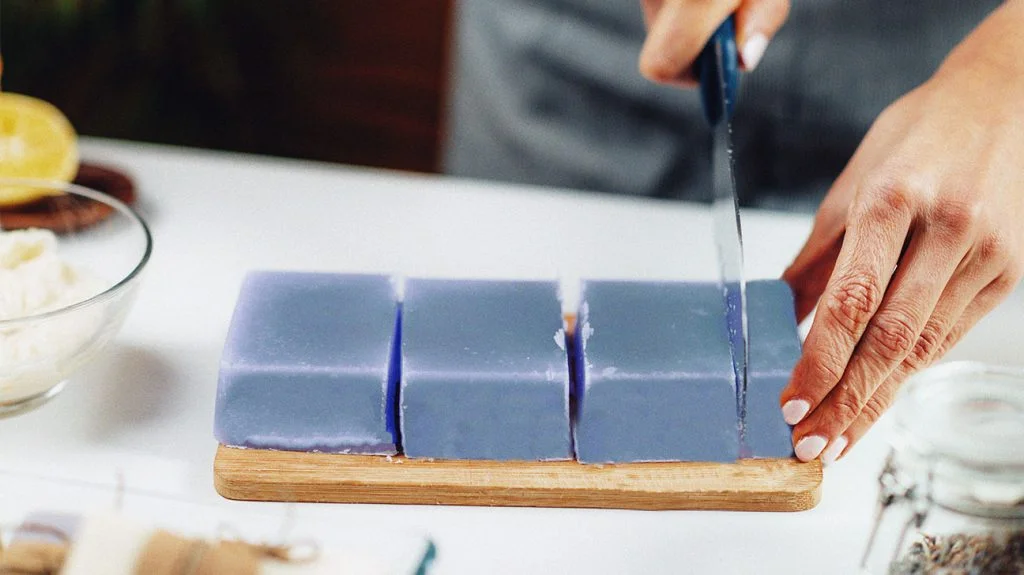Making handmade soap can be a fun and rewarding DIY project. Here is a general overview of the soap-making process:
Ingredients:
Oils or fats: You’ll need a combination of oils or fats to create the base of your soap. Common options include coconut oil, olive oil, sunflower oil, and shea butter.
Lye: Also known as sodium hydroxide, lye is a caustic substance that is essential for the saponification process, which turns oils/fats into soap.
Water: You’ll need water to dissolve the lye.
Optional additives: You can add various ingredients like essential oils, colorants, herbs, and exfoliants to customize your soap.
Equipment:
Safety gear: Wear gloves, goggles, and a long-sleeved shirt to protect yourself from lye and other potentially harmful substances.
Heat-resistant containers: Use containers that can withstand lye and heat, such as stainless steel or heat-resistant plastic.
Mixing utensils: Use stainless steel or heat-resistant plastic utensils for stirring.
Soap molds: Choose molds made of silicone, plastic, or wood to shape your soap.
Thermometer: A digital thermometer is useful for monitoring temperatures accurately.
Instructions:
1. Measure and weigh your oils/fats according to your recipe. Heat them in a heat-resistant container until they are melted.
2. In a separate container, measure and weigh the lye. Add the lye to water, following proper safety precautions (such as wearing gloves and goggles), and stir until dissolved. The mixture will become very hot and release fumes, so make sure to work in a well-ventilated area.
3. Allow both the oils/fats and the lye solution to cool to around 100-120°F (38-49°C).
4. Slowly pour the lye solution into the oils/fats, stirring constantly with a heat-resistant utensil. This will start the saponification process and thicken the mixture.
5.If desired, add any optional additives, such as essential oils, colorants, herbs, or exfoliants. Stir well to incorporate.
6. Pour the soap mixture into soap molds and tap the molds gently to release any air bubbles.
7. Let the soap mixture harden in the molds for 24-48 hours. The saponification process will continue during this time, and the soap will become harder.
8.Once the soap has hardened, remove it from the molds and cut it into bars, if desired.
9. Allow the soap to cure for 4-6 weeks in a well-ventilated area. This allows the soap to fully harden and mellow, creating a longer-lasting and milder bar of soap.
10. After curing, your handmade soap is ready to use! Enjoy the benefits of your custom-made soap.
Please note that making soap with lye requires proper safety precautions. Always wear protective gear, work in a well-ventilated area, and follow safety guidelines carefully. It’s also recommended to research and follow a detailed soap-making recipe or take a soap-making class if you’re new to the process.

